|
| Author |
Message |
mattd
Member
|
# Posted: 26 Nov 2013 12:46
Reply
i plan to go with a stove similar to this one in my 320sq ft cabin...
http://www.tractorsupply.com/en/store/united-states-stove-cast-iron-logwood-stove-lar ge
i have read the diff code requirements for the distances away from the structure, the need for a heat shield with an air gap behind it and openings at the bottom, etc.
all of the info i have seen seems to point towards more of an installation in a home with sheet rock walls. looking at the way my chimney in the house is installed, it's just bricks surrounding the firebox with no heat shield, etc.
if i did brick on the floor, brick flush to the roughed in exterior wall framing on the back and one side of the stove is that safe? seems like thats the way the fireplace at home is anyway.
|
|
bldginsp
Member
|
# Posted: 26 Nov 2013 13:16 - Edited by: bldginsp
Reply
It's all about distance to the nearest combustible material. Even if the studs are covered with brick, the brick will heat up and could get hot enough to cause the studs to catch fire. Brick and masonry are conductors and so long as heat is applied to them they continue to get hotter. So what you need to do is see what the clearances to combustibles are for the particular stove you choose, then reduce those clearances using any of the methods you described with spaced heat shields or brick spaced out from the wall etc. All those calculations have been worked out by other people over a long time and a lot of experience, so they think they know what 'safe' is. If you do differently you are on your own.
I'd thnk twice about that stove. It's not EPA certified so might not be allowed in your area. Aside from that, cheaper stoves like that tend not to be very air tight so you can't damper it way down like a tight stove, simply because it leaks in enough air to keep burning. In a small cabin most wood stoves are too big to begin with and will roast you out unless you can really damper it down. I don't know about that brand you showed- maybe it is tight enough to damper and maybe you don't need a certified stove where you are.
Your original question was regarding the hearth, which technically refers only to the floor beneath the stove, not the walls, which are the 'surround'. Anyway for safety at the hearth it's a good idea to first put down sheet metal on the wood floor to prevent any embers that make it past the brick or stone from contacting the combustible flooring. Then put cement board on the sheet metal to mortar in your brick or stone. Hearth should extend under stove to the wall and 16 inches in front of the stove, 8 inches on each side. I don't like that 16 inches for a small cabin where space is tight but I don't think there are exceptions to that rule for wood stoves. It's a general rule for all fireplaces and I think it is applied across the board to all woodstove installations, but I could be wrong.
|
|
MtnDon
Member
|
# Posted: 26 Nov 2013 13:21 - Edited by: MtnDon
Reply
Download or ask for the user manual before buying. All manuals should list the clearance requirements. Go by that and not by what was done in the past. There are many older wood stove installations that are presently deemed unsafe because we have learned more about what is dangerous and how to be safe.
That stove likely requires the maximum clearances from its appearance and no EPA label.
I see bldginsp beat me... wish this forum would display a notice that a post has been made that we 'posters' have not read.
|
|
bldginsp
Member
|
# Posted: 26 Nov 2013 13:32
Reply
After I post, I often think of something I didn't include, so I go to edit, then while I'm editing someone else posts with the additional info that I'm putting into the edit.
When Thomas Jefferson and John Adams had their long term correspondence in their later years, it took letters at least two weeks to get from rural Virginia to Boston.
|
|
groingo
Member
|
# Posted: 26 Nov 2013 13:55
Reply
After having one of the Vogelzang No. 26 box stoves and looking at the US stove (actually made by Vogelzang) the problem was the very thin amount of iron especially in the sides of 1/8 to 3/16 inch which made it a very poor heater and a very wood hungry stove.
Your money would be better spent on any number of stoves new or used but just not one of those.
Personally I have a Waterford Wood Stove ( because of 5/8inch thick iron throughout and it has a secondary burn chamber for more efficiency and a glass window to see the fire) this I found locally for $50.00 (a steal), I rehabbed it and used it for several seasons and have now removed and heat now with Propane which I like much better all around...no more fuss or muss.
|
|
silverwaterlady
Member
|
# Posted: 26 Nov 2013 14:49
Reply
Check out the Kimberly stove. I think it is a innovative small wood burning stove.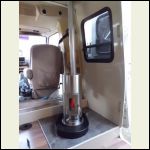
image.jpg
| 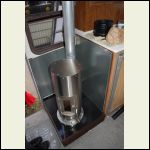
image.jpg
| 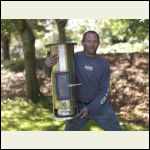
image.jpg
| 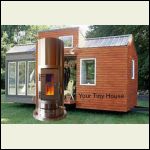
image.jpg
|
|
|
bldginsp
Member
|
# Posted: 26 Nov 2013 14:56
Reply
Vogelzang are Chinese. 'United States' purports to be US made, is it?
|
|
Steve961
Member
|
# Posted: 26 Nov 2013 15:19
Reply
Quoting: silverwaterlady Check out the Kimberly stove. I think it is a innovative small wood burning stove.
While the Kimberly is certainly innovative, I don't think it's worth the $3,750 they are asking for it. They state on their FAQ that their high price is offset by the reduced cost of venting since they use double walled pellet stove pipe. They also state that a traditional chimney, hearth, etc. can cost upwards of $2,000. For a small cabin that's crazy money - excluding my wood stove, a Jotul 602, everything else cost less than $500.
My suggestion for a high quality, properly sized wood stove would be the Jotul 602. If you watch Craigslist closely you should be able to find a used one in excellent condition for under $500.
|
|
|
MtnDon
Member
|
# Posted: 26 Nov 2013 15:23 - Edited by: MtnDon
Reply
USSC website
Old American company. If you listen to the entire "about us" presentation they do say they design and build all their products themselves.
This stove has the manual online from USSC on this page; 34" sidewall, 26" rear wall clearances. Also listed are the heart requirements. Like I said before D/L that and have a read.
Funny thing is they have several other product names listed on their website; one is Vogelsang ???
|
|
TheWildMan
Member
|
# Posted: 26 Nov 2013 15:24
Reply
US stove company is the brand logo on tractor supply logwood stoves. it may have started out as an old US company in the late 1800s or early 1900s but today likely gets its inventory made in china and contracted through vogelzang (volgelzang stove with US stove company logo).
I had ones of those, its good for a garage that you use once or twice a year but I strongly recommend against it. the stove cant dampen down and the swivel on the door is just decoration and doesn't effect the stove in any way. I had been living in an uninsulated shed and snow was falling and was unable to find or afford anything better so used that one to avoid freezing but its very poorly made. I had to run single wall stove pipe out a window (that wasn't camping, it was surviving)
if you can afford anything else I recommend you buy something better, even a barrel stove kit for $60 plus a barrel would be a better stove than these. they heat up fast and are subject to bad back drafts that fill the cabin with smoke. I made mine work better by packing morter into the cracks. I got a volgelzang boxwood stove from harbor freight (that spring on clearance for $60), it had much smaller gaps and worked a lot better, but it still cant be damped down.
as someone who had one of those logwood stoves I can only advise you to get something else
btw they are EPA exempt, its an old design and has a high rate of airflow with 35/1 air to smoke ratio. they can be installed in a lot of places and do meet code but they are terrible stoves.
you can cut the stove clearance for that stove in half by using a heat shield (out of the owners manual). the cheapest is to use metal roofing and use spacers to keep it 1 inch off the wall, it reflects heat away from the wall and provides air flow to further cool it down.
|
|
groingo
Member
|
# Posted: 26 Nov 2013 15:57 - Edited by: groingo
Reply
Vogelzang are Chinese. 'United States' purports to be US made, is it?
No, they are a sub line of Vogelzang made in Vogelzang's plant in China....it's all about marketing.
|
|
bldginsp
Member
|
# Posted: 26 Nov 2013 19:06
Reply
So, US is Chinese and Chinese is US. Now I got it.
Glad I got a Morso...
|
|
Truecabin
Member
|
# Posted: 27 Nov 2013 12:38
Reply
Quoting: bldginsp Even if the studs are covered with brick, the brick will heat up and could get hot enough to cause the studs to catch fire.
i dont know it this will happen under a stove unless the stove has no legs
|
|
MtnDon
Member
|
# Posted: 27 Nov 2013 12:53
Reply
Quoting: Truecabin Quoting: bldginsp Even if the studs are covered with brick, the brick will heat up and could get hot enough to cause the studs to catch fire. i dont know it this will happen under a stove unless the stove has no legs
This is a real potential problem. It can take years of exposure to heat to become apparent. Wood can become pyrolized. That greatly reduces the temperature of ignition. Some old buildings have had fires start decades after the old steam heat was installed if the steam pipes were improperly installed. I know of a case at a University in the Pacific NW where that happened about 5 - 6 years ago.
~~~~
Take my VC Aspen for an example. If it has no bottom heat shield is can not be installed on anything other than concrete laid over bare earth. No wood framing allowed by the mfg instructions. BUT with the heat shield wood framing is permitted under the fire proof floor protection. We used sheet copper and ceramic tile.
|
|
SandyR
Member
|
# Posted: 27 Nov 2013 13:58
Reply
We have a Warnock Hersey stove ( I believe made in Canada ) that we bought used. They list the requirements of distance on the back of the stove.
We have had NO complaints about this stove. We've been using it solely for 7 years.
|
|
bldginsp
Member
|
# Posted: 28 Nov 2013 08:02
Reply
SandyR- Warnock Hershey is a rating agency, like Underwriter's Labs (UL). I don't think they make stoves, they test them and rate them. That's why their name is on the stove.
Truecabin- you are right that the stud heating issue isn't relevant under the stove, I was talking about the walls. I assume that the stove manufacturer is basically determining the distance to the floor with the legs.
As MtDon says, repeated heating of wood reduces its ignition point. I think I read that the ignition temp can actually go down to 200 degrees or so, scary low.
|
|
rmak
Member
|
# Posted: 28 Nov 2013 10:44
Reply
If I can jump into this conversation, please. I've been looking at these two for my small 12 X 16 cabin.
http://graystoveworks.com/
Not epa approved yet. American made in PA. Comes with a nice stand. About $900.
http://www.marinestove.com/codinfo.htm
With chimney parts about $1,800.
The big caution I have is buying too much stove. I've been there and done that with my last home. Uncomfortably hot is almost as bad as uncomfortably cold.
In fact, I have a beautiful unused Vermont Castings in our living room now. Unfortunately, It would cook me out of our little cabin.
Anyhow, any input on these stoves? I believe each would heat up to 300 sq. ft. which would be OK for the original poster, mattd.
|
|
brokeneck
Member
|
# Posted: 30 Nov 2013 16:10
Reply
REMEMBER THE BIG COST OF A WOOD STOVE IS SOMETIMES THE PIPE ..
|
|
groingo
Member
|
# Posted: 30 Nov 2013 16:21
Reply
Well, I got the word from the Boss after I removed my Wood Stove, in my cavernous 195 square feet the lack of stove left a big hole, the Boss (My blind Cat Mr. D) let me know in no uncertain terms that he was not happy about the lack of stove so...it's back, I use very small fires but he has found his old friend, when it's going he is right there all stretched out.
The things we do to maintain peace in the homestead.
|
|
Ditchmonkey
Member
|
# Posted: 27 May 2016 13:07 - Edited by: Ditchmonkey
Reply
Quoting: silverwaterlady Check out the Kimberly stove. I think it is a innovative small wood burning stove.
I talked to a guy who was a "dealer" of sorts for Kimberly. I think their business model really undercuts getting this stove to end-users. They offer an enormous commission on every stove sold, which is nice as a motivator for dealers to sell the product, but contributes greatly to a price that is just too high.
I have also felt that the enormous commissions incentivize "dealers" (who are often simply users of the stove with some kind of online media presence) to not be completely honest about how this stove performs. Reference:
https://www.reddit.com/r/TinyHouses/comments/2o79vo/the_kimberly_wood_stove_review/
|
|
Cchannann
Member
|
# Posted: 8 Sep 2017 22:30
Reply
If I remove the drywall from behind my wood burning stove and install cement board is an air space still necessary?
|
|
ICC
Member
|
# Posted: 8 Sep 2017 23:59
Reply
All that does is remove the flammable paper covering of the drywall. There are still the studs and if they are wood, not steel, they are still counted as a combustible material and the stove must still be spaced the proper recommended distance.
|
|
toyota_mdt_tech
Member
|
# Posted: 9 Sep 2017 20:16 - Edited by: toyota_mdt_tech
Reply
mattd, you can fix metal shields to your woodstove, this means permanently secured, not just some shield bent that just sets there (freestanding) this will reduce setback, how much? Who knows, but it should help to tighten it up (give you more room)
I never could find the right size, couldnt find one air tight enough, and I wanted it in 1/4" plate steel, no cast iron, could only find cast iron, multi piece, so I made my own.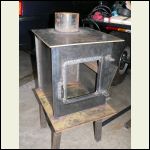
left_side_view.jpg
| 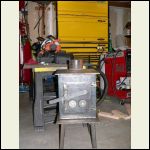
woodstove10.jpg
| 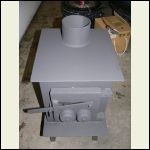
woodstove20.jpg
| 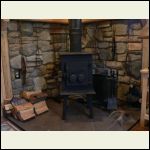
P1020622.JPG
|
|
|
Cchannann
Member
|
# Posted: 10 Sep 2017 00:46
Reply
Could easily remove wood offsets that are against the block wall. Install cement board with proper offsets on block wall. The stove is 18" from the wall, but the paper on the drywall is pealing. Wall is not hot to touch, only warm. However, I am concerned that the dry wall is really drying out and could become flammable.
|
|
|

